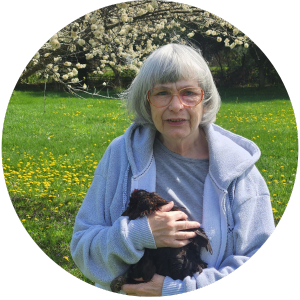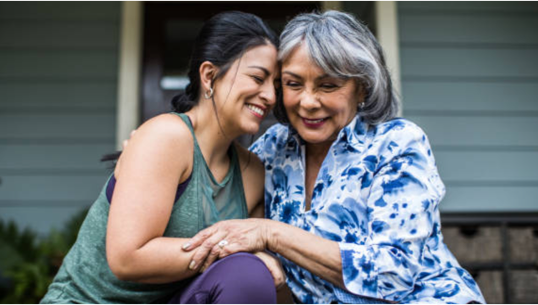Cheryl Shepherdson: accessing health care from home
At heart, Cheryl Shepherdson has always been a country girl.
She and her husband were both born and raised in rural Michigan. Life took them to El Paso, Texas, and nearby Las Cruces, New Mexico, where they lived for decades.

After Robert passed away in February 2022, Cheryl moved back to Michigan to be near her son Steven and his young family. Very near, in fact—they share a 10-acre farm in Jonesville that grows apples, pears, chestnuts, and Japanese heart walnuts.
Unfortunately, Cheryl’s big transition has been complicated by cancer. For years she had experienced a skin condition around her left eye, nose, and upper cheek. As the condition worsened, the retired legal secretary sought treatment with her new doctor in Michigan.
But healthcare can be hard to come by in Jonesville—Cheryl’s local doctor is only in the area twice a week, and it took months for her to be seen, diagnosed, and referred for treatment. The official diagnosis came around Thanksgiving 2023: basal cell carcinoma.
This journey meant a flurry of appointments with Cheryl’s family doctor and dermatologist, and eventually an oncologist and ophthalmologist. Now most of her healthcare team is at the University of Michigan Health in Ann Arbor. For every appointment, the 75-year-old must travel at least an hour each way. It all adds up—especially when she may have two, three, or more visits in a single week.
Another factor worried Cheryl: those intense Michigan winters she remembered all too well. What if bad weather made driving to Ann Arbor unsafe?
“The doctors always say, ‘Don’t risk your life to get here,’ but that just delays everything,” Cheryl said. “I don’t want to reschedule unless I absolutely have to.”
Fortunately, telehealth technology made it possible at times for Cheryl to connect with her healthcare team without making the trip. She consulted with her oncologist by video conference in January 2024, when it was time to start cancer treatment.
Telehealth makes it possible for older adults and people in rural areas of this country, like me, to get the services they need.”
Cheryl Shepherdson
“He didn’t need to see me one-on-one at that point,” she said. “He informed me of the possible side effects of the medication and provided me with the information I would need in the coming days—all without leaving my home in the middle of bad weather.”
When Cheryl’s doctor first prescribed oral medication for her skin cancer, her out-of-pocket share under Medicare was going to be $3,250. “On retirement funds? That’s almost impossible,” Cheryl said. “My husband left a small savings account, but that amount pretty much would have wiped it out.”
Thankfully, the University of Michigan Health’s financial assistance office recommended contacting the PAN Foundation. They applied for a copay grant on Cheryl’s behalf on Friday, and by Monday the funding from PAN came through. The drug arrived Wednesday, so there was no delay in her treatment.
A few months later, Cheryl is responding “amazingly” well. Her skin’s appearance has improved and she’s in much less pain. “I’m looking forward to people not noticing that anymore. Life is better already,” she said.
In the coming months, Cheryl’s doctors will determine whether she needs cancer surgery. In the meantime, she’s looking forward to warmer weather and visits with friends. She joined a group at a nearby senior center that makes hats, scarves, mittens, and blankets for people in need.
And on the farm, there’s always work to keep her family busy. They’ll preserve some of their harvest—she recently learned how to roast chestnuts—and give more away as gifts. They might even try to sell the rest at the local farmer’s market.
“I’m glad my grandkids get to see things grow and enjoy the freedom,” Cheryl said of life in the country.
Cheryl is grateful for her family, for her healthcare team and the financial assistance, and for the modern technology that has made life with cancer a little easier.
“Telehealth makes it possible for older adults and people in rural areas of this country, like me, to get the services they need,” she said.
